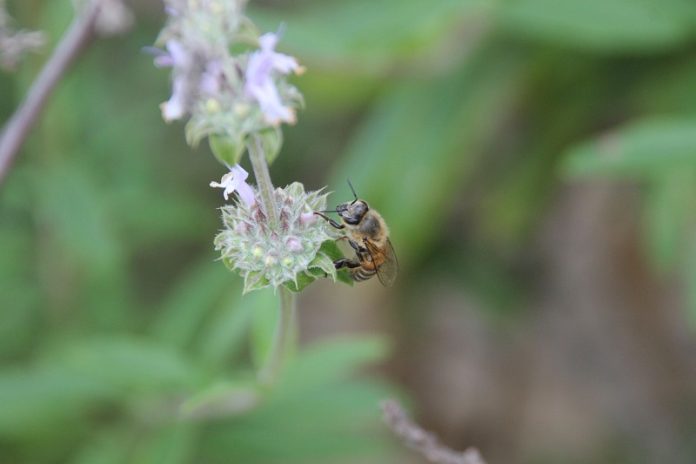
While honey bees are often praised for their vital role in pollinating crops, a new study reveals they may be causing serious harm to native pollinators in Southern California.
Scientists from the University of California San Diego have found that non-native honey bees are overwhelming the region’s natural ecosystems, threatening the survival of hundreds of native bee species.
Honey bees are not originally from North America, but humans have introduced them around the world to support agriculture.
In many areas, including the Southwestern U.S., they have escaped human control and now live in the wild.
These feral honey bees have become extremely common in places like San Diego, where they dominate local flower patches.
In this new study, published in Insect Conservation and Diversity, the researchers estimate that honey bees make up 90% of all bees visiting native flowers in the area.
Even more striking, they account for 98% of all bee biomass, which means they take up almost all the food resources and space available to bees in the ecosystem.
By observing three common native plants—black sage, white sage, and distant phacelia—the researchers discovered that just two honey bee visits can remove over 60% of the pollen from a flower.
In one hectare of native land, honey bees can strip enough pollen in a single day to feed thousands of native bees, leaving little behind for them. This is troubling because all bees, including natives, rely on pollen to raise their young.
Because honey bees are bigger and work in highly coordinated groups, they can outcompete native bees for pollen and nectar.
They start foraging early in the morning, removing much of the pollen before native bees even have a chance to collect it.
The scientists also found that honey bees can lower the quality of seeds produced by plants they pollinate, compared to native bees. So not only are honey bees taking resources from native bees, they may also be weakening the plants that depend on pollination to reproduce.
With over 700 native bee species in Southern California—some of them rare or in decline—the study calls for more attention to how honey bees affect local ecosystems.
Researchers suggest limiting where commercial honey bee hives are placed after crop seasons, especially on public lands.
In places with threatened native bees, land managers might even consider removing or relocating honey bee colonies.
While honey bees remain important for farming, the study reminds us that they can become a threat in natural areas where they don’t belong.



